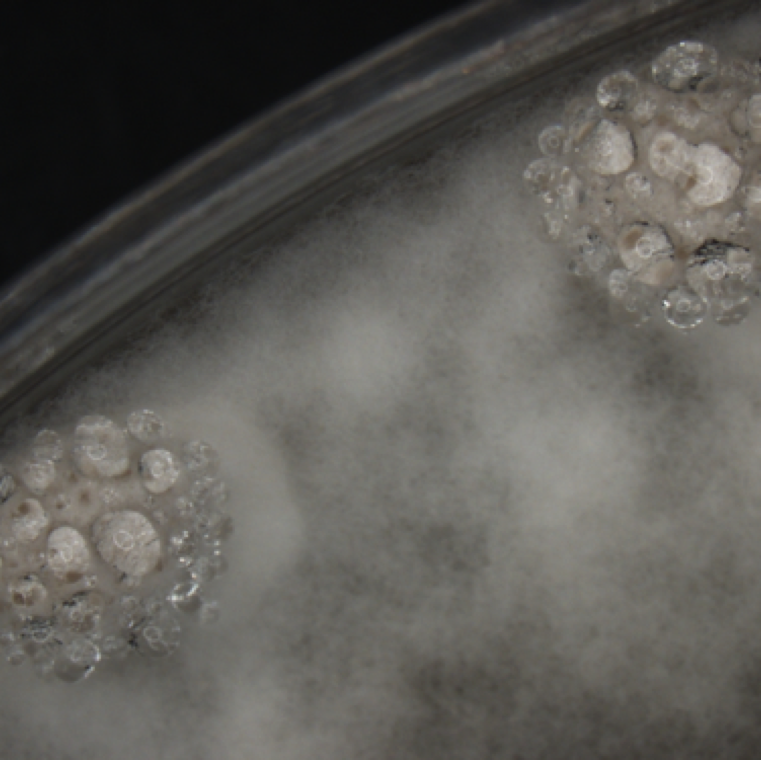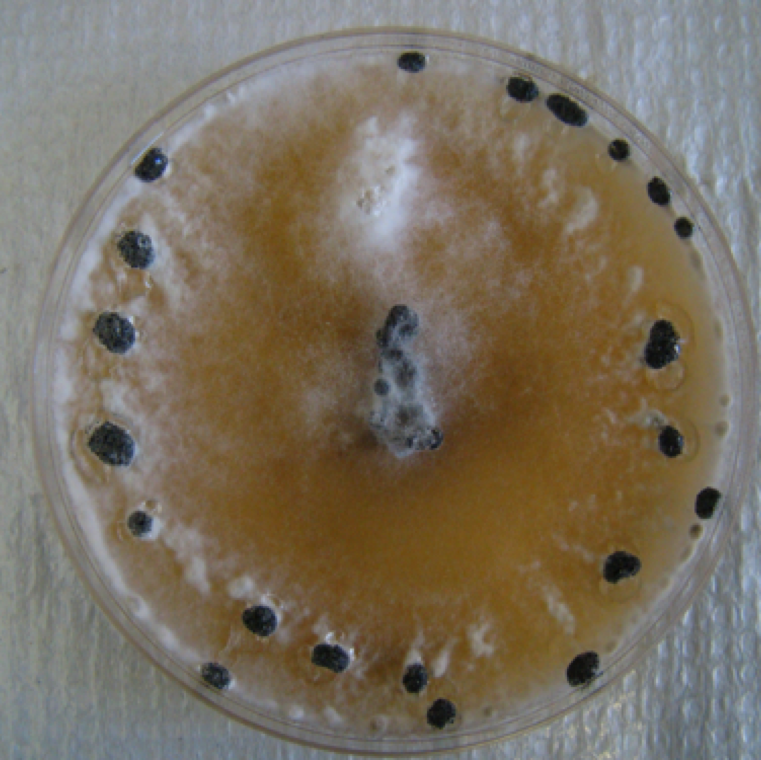

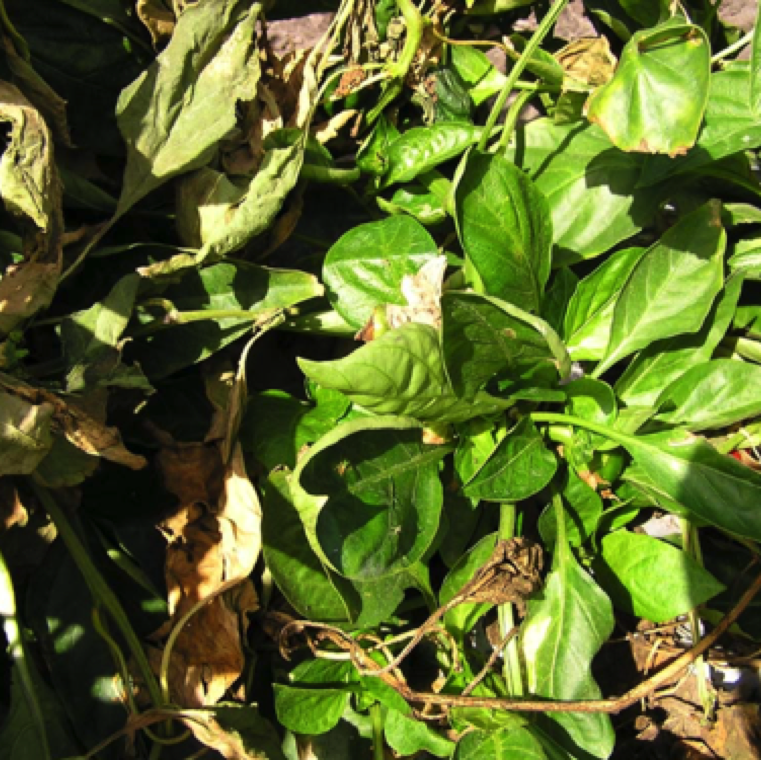
Severe wilting of the plants is a symptom of white mold infection on pepper. The plants will not have bacterial streaming as in case of bacterial wilt.
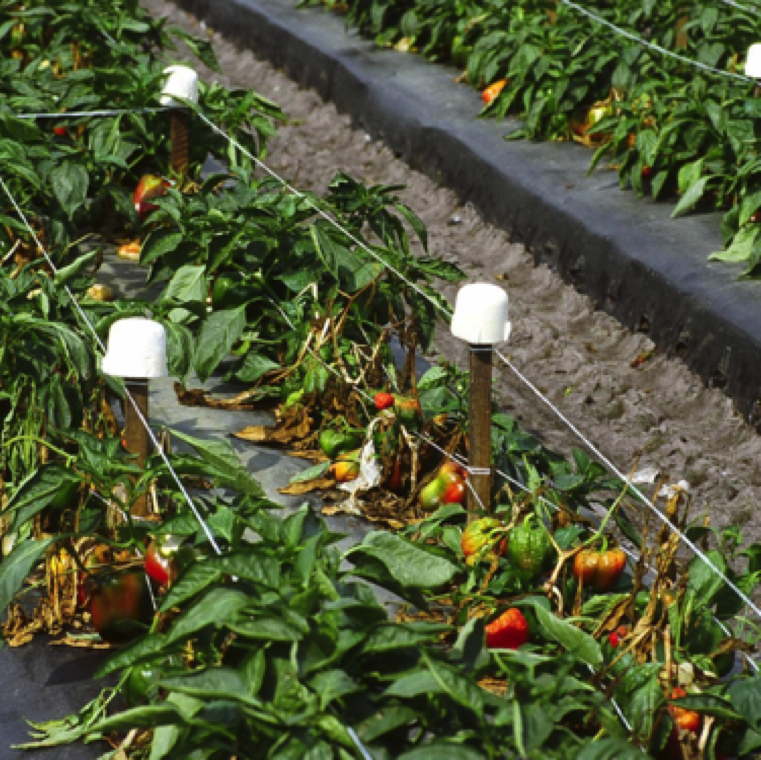
A research field trial indicating potential damage that can be caused by the fungal pathogen. In natural conditions, the infection tends to be spotty in the field.
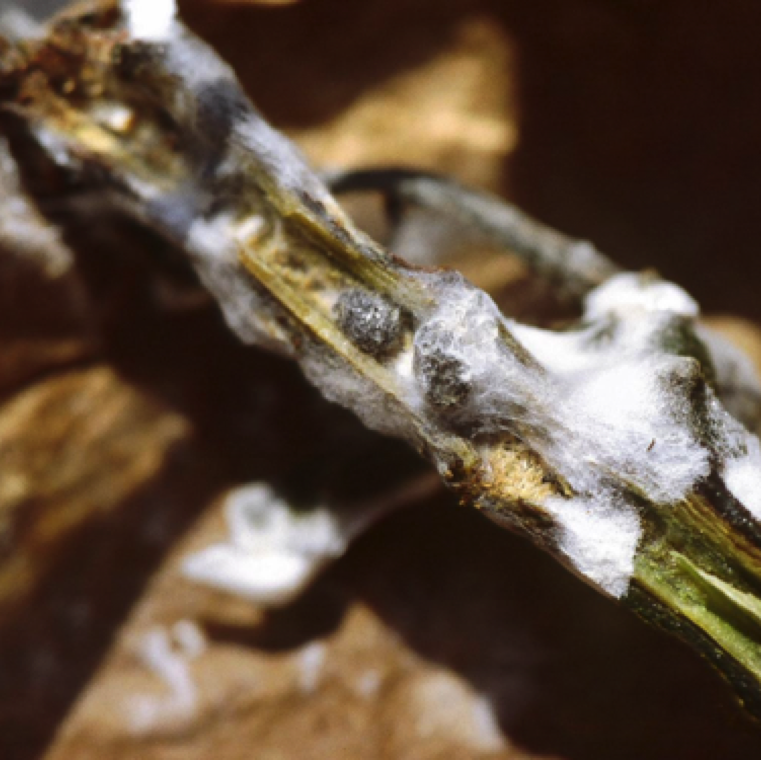
Cut stem of the pepper plants may have black sclerotia which are protective survival structures of the fungus. The white fluffy mycelium can be also noticed.
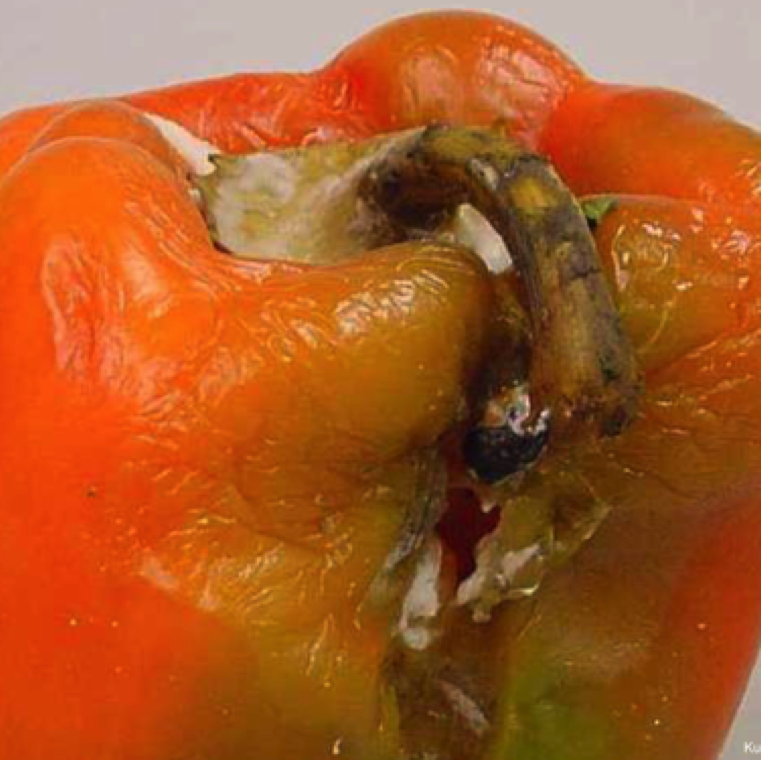
Fruits can also become infected. The difference between southern blight and white mold symptom is the size and appearance of the sclerotia which is small and mustard like in case of southern blight.
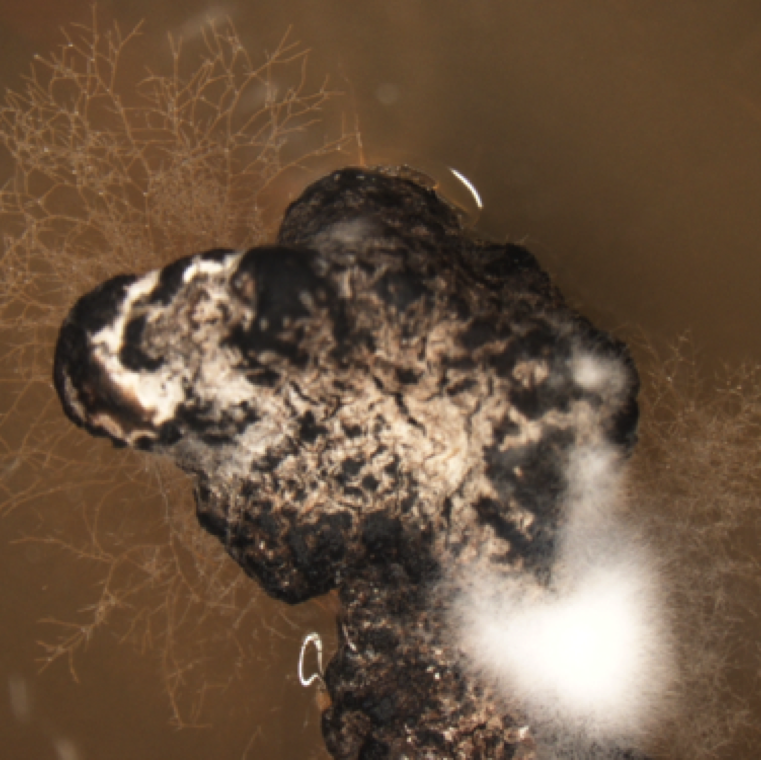
Mature sclerotia with a melanized outer layer and growth of mycelium, the vegetative part of the fungus from a dry sclerotia in artificial media.
WHITE MOLD
Fungal causal agent: Sclerotinia sclerotiorum
Pepper diseases
